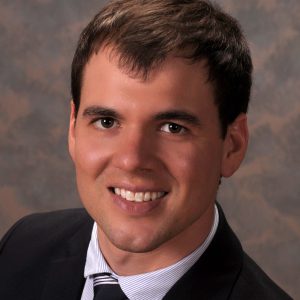Written by Robert Orpet and Louie Nottingham, WSU TFREC-Wenatchee, May 2020.
Pear psylla damage and management costs are among the greatest threats to Washington pear industry profitability. To meet the challenges of this difficult-to-manage pest, we are working to develop and validate management programs that: (1) use better-timed sprays to increase pear psylla suppression, and (2) promote biological control. Part of our efforts include testing potential for earwigs to suppress pear psylla.
Earwigs for pear psylla suppression
Studies from Europe show earwigs suppress European pear psylla (Lenfant et al. 1994, Solomon et al. 1999, Höhn et al. 2007). In Washington State apple orchards, earwigs are common and help keep woolly apple aphid suppressed (see a video of predation in the field here (https://www.youtube.com/watch?v=sSFakIgkfMI)). They also probably only feed on apple fruit that has already been damaged (Orpet et al. 2019). However, earwigs are absent from many pear orchards in the Wenatchee Valley (Dupont and Strohm 2019).
Can we improve pear psylla control by collecting and releasing earwigs to establish populations in pear orchards?
To answer this question, in 2019 we released earwigs into four pear orchards in Washington. At each orchard, we released 200 earwigs at each of 6 trees within 1-acre blocks. Also per orchard, a neighboring 1-acre block with no or few earwigs found during previous monitoring was used as a control. This year we will assess earwig establishment and spread, pear psylla control, and fruit damage. With our results, we hope to develop practical tactics for pear psylla control using earwig releases.
Phenology matters for pear psylla biocontrol
It is important to remember that earwigs are a member of a larger team of pear psylla natural enemies, and different natural enemy species complement each other by attacking pear psylla in different ways and times. Earwigs spend most of their time in plant canopies between mid-June to October; before that, they overwinter underground or forage mainly on the ground. This means that other natural enemies such as the predatory bugs Deraeocoris (https://treefruit.wsu.edu/crop-protection/opm/deraeocoris/) and Campylomma (https://treefruit.wsu.edu/crop-protection/opm/campylomma/), the specialist parasitoid Trechnites (https://treefruit.wsu.edu/crop-protection/opm/trechnites-insidiosus-crawford/), and lady beetles (https://treefruit.wsu.edu/crop-protection/opm/lady-beetles/) are important for suppressing first generation pear psylla nymphs in April to May. If prey abundance is low, these natural enemies might starve or leave orchards, but earwigs are different: they are omnivores, only disperse at most 30 meters per month (Moerkens et al. 2010), and have only one generation per season. We think these qualities make earwigs “density-independent” predators that are present at a consistent level and ready to attack psylla whether psylla pressure is high or low. This means earwigs can suppress pear psylla populations before they increase, like a first line of defense.
Overall, to transition to softer yet effective management programs in pear, earwigs may be one valuable component for success.
This year (2020), we will observe how earwig appearance in pear tree canopies lines up with pear psylla and other natural enemies’ phenology at our four earwig release experiment sites. We are also conducting new pesticide tests to determine which are compatible or harmful to earwigs and other important natural enemies.
If you have a high pear psylla population and are interested in releasing earwigs in your pear orchard, contact us (contact info below). We’re looking to add a few more sites for earwig release experiments this year.
References
Dupont, S. T., and C. J. Strohm. 2019. Integrated pest management programs increase natural enemies of pear psylla in Central Washington pear orchards. J. Appl. Ecol. 144: 109–122.
Höhn, H., A. Lahusen, R. Eder, T. Ackermann, L. Franck, H. U. Höpli, and J. Samietz. 2007. Régulation du psylle du poirier Résultats et observations de 2002 à 2006 en Suisse alémanique. Rev. suisse Vitic Arboric Hortic. 39: 169–176.
Lenfant, C., A. Lyoussoufi, X. Chen, F. Faivre d’Arcier, and B. Sauphanor. 1994. Potentialités prédatrices de Forficula auricularia sur le psylle du poirier Cacopsylla pyri. Entomol. Exp. Appl. 73: 51–60.
Moerkens, R., H. Leirs, G. Peusens, and B. Gobin. 2010. Dispersal of single- and double-brood populations of the European earwig, Forficula auricularia: a mark-recapture experiment. Entomol. Exp. Appl. 137: 19–27.
Orpet, R. J., J. R. Goldberger, D. W. Crowder, and V. P. Jones. 2019. Field evidence and grower perceptions on the roles of an omnivore, European earwig, in apple orchards. Biol. Control. 132: 189–198.
Contacts
 Robert Orpet
Robert Orpet
Postdoctoral Research Associate
WSU TFREC Wenatchee
email: robert.orpet@wsu.edu
 Louis Nottingham
Louis Nottingham
Research Assistant Professor
WSU TFREC Wenatchee
email: louis.nottingham@wsu.edu
phone: 509-293-8756
treefruit.wsu.edu articles may only be republished with prior author permission © Washington State University. Republished articles with permission must include: “Originally published by Washington State Tree Fruit Extension at treefruit.wsu.edu” along with author(s) name, and a link to the original article.



